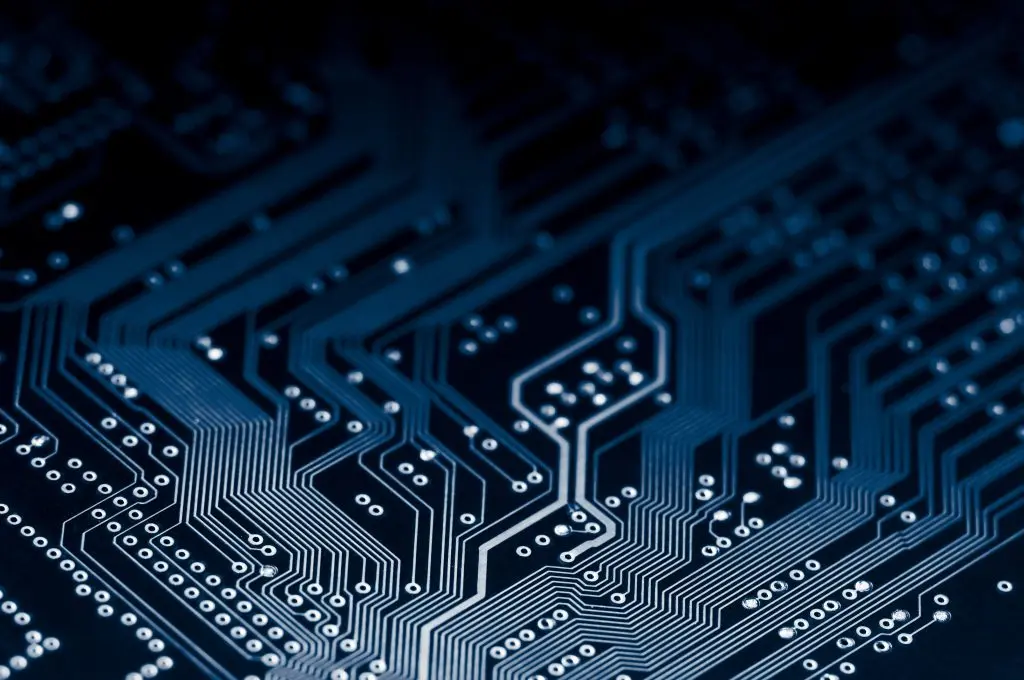PCB Solder Mask Colors
What is a Liquid Photo-Imageable Solder Mask?
Printed circuit boards have broken away from their uniform green coloration thanks to liquid photo-imageable solder mask, which you may see referred to as LPI or LPISM in different industry publications. This is essentially a specialty ink that can be screen printed, sprayed or curtain coated on PCBs and other items.
By using a mixture of polymers and coating solvents, liquid photo-imageable solder masks achieve a thin coating that works for nearly every PCB surface, making it an effective replacement for traditional PCB coatings. It is cured on the board with a UV light after the panel is cleaned and scrubbed.
The one common drawback is that LPISM cannot always be used on a PCB if that board requires a specialty plating finish.

What Are The PCB Solder Mask Color Options?
Solder Mask Options by Color
Green Solder Mask
The green standard is still a common PCB solder mask option because it allows everything to be seen clearly. White text on the green background has a high amount of contrast, and the finish isn’t bright enough to reflect too much light, so there’s a reduction in glare. Green is a common choice for boards that must be inspected, plus some may find it to be an effective method to highlighting high-quality craftsmanship because the color does not get in the way of showing off the routing.
White Solder Mask
White printed circuit board solder mask applications are becoming slightly more common because they can make a PCB look especially pretty in a clean environment. They make stunning show models in many situations. However, real-world applications can be more difficult because the white solder mask hides traces very well. Inspection can become almost impossible in some situations, especially if you’re in a room with only direct overhead light. One area where it does shine, however, is in the use of black silkscreens because of their stark contrast with white.
Black Solder Mask
Black solder masks produce slightly less of a visibility concern compared to white options. Contrast is minimal but labeling and large components are easy to see. The downside is that light may catch the component and cast a small shadow, making traces that much more difficult to see. Black PCB solder mask options are also typically not recommended because of the increase in heat, which may discolor silkscreen and make the board more difficult to clean. Like white, it’s a very pretty board to observe and can create a distinct visual if you’re trying to highlight a capability of yours.
Red Solder Mask
Red boards are becoming a popular option because they provide good visibility and contrast for planes, traces and even your empty space. It’s less contrast than green boards but will give a PCB a feeling of freshness when compared to stale industry standards. Silkscreens stand out well against the red.
Blue Solder Mask
Label-heavy boards should consider a blue liquid photo-imageable solder mask because of the significant contrast it creates with silkscreen. Traces can become much more difficult to see without proper lighting and magnification, so that’s the balance point for this blue option. Blue is often chosen for how it can look. It isn’t as striking as white or black, but it does provide a compelling aesthetic choice that implies complexity and craftsmanship, especially if you’re mounting it against an LCD. It is a little more likely to show dirt compared to some other colors.
Yellow Solder Mask and More
Many new colors are emerging, but they can be difficult to manage. Yellow is a pleasing color, but it contrasts poorly with both silkscreens and traces, making it difficult to use in any real-world application. Different colors will balance different needs, such as cleanliness, visibility and style. Always try a sample before running with your new color choice.

Get a Free Quick Quote.

Matte vs. Glossy Solder Mask
Today’s PCB solder mask options also include new finish applications that don’t have to do with the coating material, but instead how it looks on the final board. Two of the most common options are matte and gloss solder masks for your next PCB design.
In the past, it’s important to note that these options were available to most PCB manufacturers, but customers rarely indicated a preference, so the final decision was left up to that manufacturer. You should always consider the benefits of each option when making your decision.
The good news is that your board will not perform differently with a matte or gloss finish. From a pure solder mask standard setting, each will leave your board in the same place. That means aesthetics and some limited field use should guide your decision-making process.
A matte finish is slightly duller, softer finish. This means it will not reflect a lot of light directly but can look washed out under a heavy light. You’ll also see more scratches with a matte finish. However, they appear darker and don’t have a true shine, making them easier to look at in more lighting scenarios. Matte finishes may make it easier for you to detect problems with a PCB.
The gloss finish option is a harder but lighter color that tends to reflect a little more light in the aggregate. However, the details in the PCB are not lost as often in harsher light as they are in a matte finish. This means gloss solder masks show less wear, such as scratches. A gloss finish that is more reflective may make inspection more difficult.
This is largely an aesthetic choice because matte and gloss finishes tend to cost roughly the same and are applied through the same process during manufacturing.


MCL’s PCB Solder Mask Options
Printed circuit board solder mask options from Millennium Circuits Limited are designed to meet your industry needs. We focus largely on the technical nature of your PCB — such as elements like controlled impedance — and allow your team to make the PCB mask choice based on what you feel is most fitting for your application and desired aesthetic.
Our production engineers have worked with almost every PCB color and finish option available and can ensure your PCB is printed just the way you like. Speak with a representative today to learn more about liquid photo-imageable solder mask colors that might be preferred in your industry or that could help you stand out during your next demonstration. Contact Us Today!

